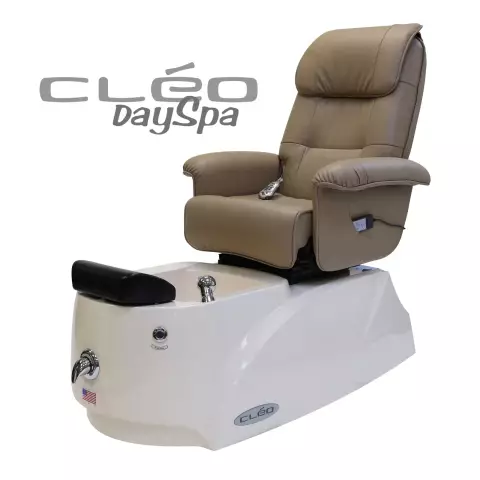- Author Rachel Wainwright [email protected].
- Public 2023-12-15 07:39.
- Last modified 2025-11-02 20:14.
Pedicure

Pedicure is a whole complex of procedures for the care of nails and skin of the feet. Pedicure includes:
- Cuticle removal;
- Treatment and prevention of ingrown nails;
- Shaping the nails;
- Nail coloring;
- Removal of corns;
- Exfoliation of the upper layers of keratinized skin;
- Foot massage;
- Nourishing, softening and moisturizing foot masks.
A pedicure not only gives your feet a beautiful and well-groomed look. If you combine it with such procedures as paraffin therapy, clay therapy, reflexomassage, you can achieve a distinct therapeutic effect, improve well-being and mood. According to reviews, a pedicure will always be beautiful if you update it at least 2 - 3 times a month.
Pedicure in a beauty salon
In the conditions of a beauty salon, quite often experts offer a hardware pedicure. Its other name is medical pedicure. It is both a health and hygienic procedure for the skin of feet and fingers, and toenails.
The method of medical pedicure excludes contact of the skin of the feet with water, therefore, it reduces the risk of infection with foot fungus to zero. A medical disinfectant is applied to the skin, and then a special emollient that acts only on the dead epithelium of the stratum corneum. Thanks to this, a layer of dead tissue is removed without affecting the living cells of the epidermis. Hardware pedicure is carried out using various individual grinding attachments, eliminating the possibility of cuts and wounds. Cosmetics used in hardware medical pedicure contain antifungal agents, thereby achieving an additional therapeutic effect.
It is the hardware pedicure that is recommended for diabetes mellitus and arthritis of the joints of the feet. In parallel, the fingers, feet and ankles are massaged, which reduces the feeling of heaviness in the legs and their swelling.
Such a pedicure, according to reviews, helps to prevent ingrown nails. With its help, you can get rid of cracked heels, calluses and corns, including in hard-to-reach places.
Another type of pedicure in the salon is spa pedicure. It includes a range of foot and nail treatments:
- Moisturizing;
- Cleansing;
- Softening;
- Massage, including with aromatic oils;
- Masks and scrubs;
- Gentle exfoliation.
Such a pedicure takes quite a long time, but this is compensated by a longer effect and a lot of pleasant sensations from the procedures.
Pedicure at home
Many people prefer to do a pedicure at home. There can be many reasons for this - lack of time or funds, remoteness of the salon, and others. To make a quality pedicure at home, you need to follow a certain sequence and rules of manipulation.
First, you should prepare the skin of your feet for a pedicure. To do this, pour toilet soap grated on a grater into a bowl of hot water, or add shower gel, liquid soap. Baking soda, ammonia or sea salt added in a small amount help to soften the skin of the feet.
You can also add natural olive oil, lemon juice, pine needles or herbs to the water. It is important that the skin and nails are well steamed, therefore periodically (as it cools) hot water should be poured into the basin.
On average, it may take about 30 minutes for high-quality steaming, this time varies from the severity of foot hyperkeratosis. It is possible to determine that the skin is ready for further manipulations to carry out a pedicure by the color of the skin - it becomes tenderly pink and soft to the touch. The steamed nails are easier to shape.
Further, experts recommend rubbing the heels with a fine-grained pumice stone or a special peeling for the feet. This will help get rid of the keratinized layers of the epidermis. Peeling for a pedicure at home can be semolina with olive oil, coffee grounds or sea salt. After such grinding, you should rinse your feet with water, and after 20 minutes proceed directly to the pedicure.

To make the nails "breathe" freely, the cuticle is pushed back with a spatula at their base. The cuticle is a roll of young and thin skin, which sometimes can reach the middle of the nail, and this spoils the appearance. If you gently move it immediately after the steaming bath, then later it will grow more slowly. Trimming the cuticle around the nail at home can be dangerous and can lead to inflammation around the nail.
Next, cut off the nails with scissors, giving them the desired shape. An important rule of pedicure is that toenails should only be cut in a straight line. This will prevent the edge of the nail from growing into the skin around it, and will relieve many unpleasant sensations.
The corners of the clipped nails are trimmed with a file. Make sure your nails go to the edge of your toe to protect them from contact with the shoes, so don't cut them too short.
The final step of the pedicure is to apply nail polish. To do this neatly and not to stain the skin around the fingers, pieces of foam rubber or special pads for the fingers are inserted between them. According to reviews, the pedicure lasts much longer if the varnish is applied in three layers. The sequence of application is as follows: first, the healing base, then the decorative colored varnish, and already on top of it a fixative.
A well-done pedicure is not only a decoration for the feet, but also the basis for their health and well-being.
Found a mistake in the text? Select it and press Ctrl + Enter.






